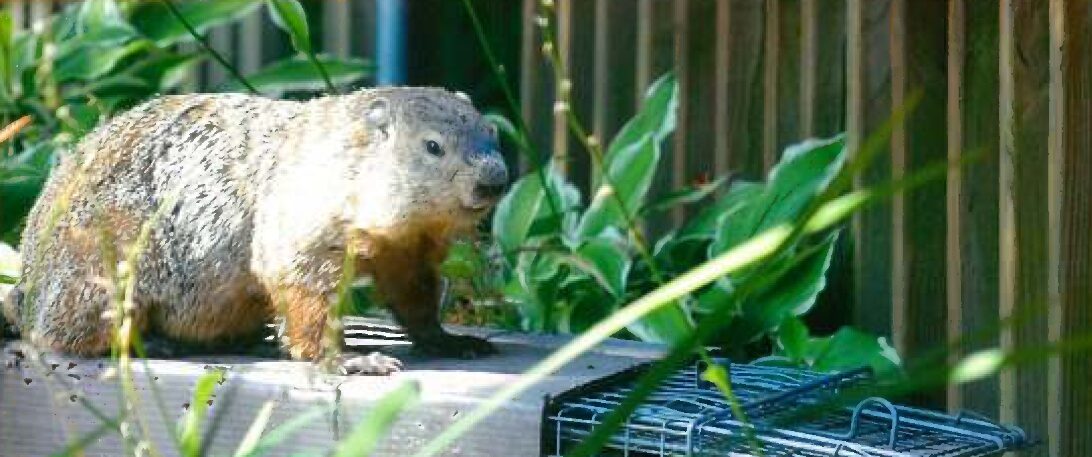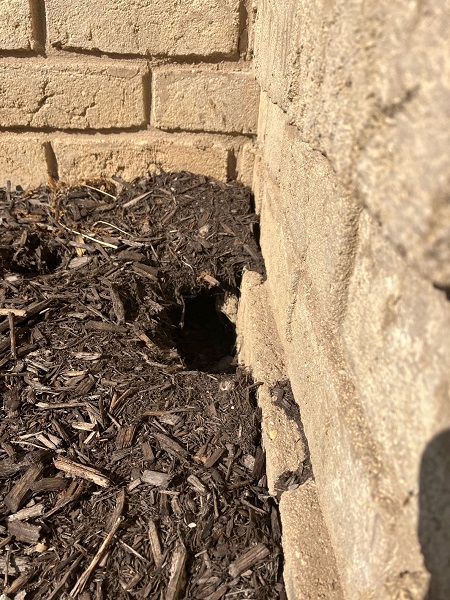
Groundhogs do hibernate! They are one of the few true hibernators that can also be nuisance wildlife. As the temperatures drop and food sources become limited, groundhogs enter a deep hibernation state to survive the cold winter months. By significantly reducing their metabolic rate, they can make it through the winter without eating. This natural behavior is crucial for their survival and gives us insight into their life cycle and how we manage our interactions with them. In this article, we’ll explore how groundhogs prepare for hibernation and what happens during this period.
Understanding Groundhog Hibernation in the Yard
Groundhogs are well adapted to live in suburban and agricultural environments. Groundhogs are attracted to your yard because of available food sources. A groundhog diet includes grasses like alfalfa, fruits, vegetables, and sometimes tree bark!
By reducing their metabolic rate, they conserve energy when food is scarce and conditions are harsh. Groundhogs rely on the fat reserves they build up during the warmer months to get through winter.
During hibernation, groundhogs experience several physiological changes. Their body temperature drops, heart rate slows, and breathing becomes shallow, entering a state of torpor. This amazing adaptation allows them to survive long periods without food. Although they may wake up briefly during hibernation, these moments are typically just for physiological maintenance.
The timing and duration of hibernation can vary depending on the climate and location. In colder areas, groundhogs might start hibernating in late October and stay in this state until March or April. In milder climates, they might hibernate for shorter periods or not at all. Knowing these patterns is essential for homeowners and wildlife enthusiasts when managing groundhog populations in their areas.
Identifying a Groundhog Preparing for Hibernation in Your Yard
As winter approaches, groundhogs engage in several activities to get ready for hibernation. One crucial task is gathering food and storing fat. During late summer and early fall, groundhogs eat a variety of vegetation, including grasses, fruits, and vegetables, to build up their fat reserves. This stored fat is essential for surviving cold weather.
Besides fat storage, groundhogs meticulously construct and choose their hibernation burrows. These burrows are typically dug deep into the ground to provide insulation against the cold and protection from predators.
You can identify a groundhog burrow by the hole. Their burrows feature one main entrance hole and are between 10 and 12 inches in diameter. You’ll typically find a groundhog hole near trees, walls, or fences. They can be dangerous if the groundhog burrow extends under a shed, porch, foundation, driveway, or sidewalk.
How to Identify a Hibernating Groundhog on Your Property
If a groundhog is hibernating, you will not see it. As winter temperatures drop, groundhogs burrow deep into the ground where the temperature remains more stable, providing insulation from harsh conditions above. Depending on environmental factors, groundhogs start hibernating around October and do not appear until early February or March.
When the weather starts warm, groundhogs begin to wake up. Groundhogs waking up from hibernation can start to cause problems for homeowners. During this time, they can damage gardens and crops.
Groundhogs will first venture out to assess their environment, looking for signs of danger and the presence of fresh vegetation before fully re-engaging with their surroundings.
Male groundhogs emerge first in search of females. The mating season for groundhogs lasts from March until April. Young are weaned by late June or early July and leave the den.
Groundhog Day
Groundhog Day is celebrated on February 2nd and is based on the folklore that an emerging hibernating groundhog can predict the weather.
If the groundhog sees its shadow, there are six more weeks of winter. If the groundhog does not see its shadow, it will be an early spring.
Punxsutawney Phil is the most famous groundhog.
Understanding this hibernation cycle can be crucial for homeowners, especially when managing groundhog populations to ensure they don’t become a nuisance in gardens and yards.
